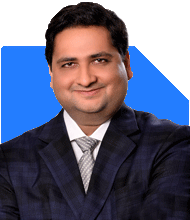Hardik Parikh | Answer |Ask -Follow
Tax, Mutual Fund Expert - Answered on Jul 23, 2023
He also holds an MBA degree from IIM-Indore.
Hardik, who began his career as an equity research analyst, founded his own advisory firm, Hardik Parikh Associates LLP, which provides a variety of financial services to clients.
He is committed to sharing his knowledge and helping others learn more about finance. He also speaks about valuation at different forums, such as study groups of the Western India Regional Council of Chartered Accountants.... more

Hello sir, I am working in a private firm and I am getting gratuity every month as salary component so how take income tax exemption on gratuity which I am receiving every month in salary
I understand your query about the tax exemption on the gratuity amount you're receiving as part of your monthly salary.
Gratuity is a benefit given by the employer to employees. As per the recent amendment, gratuity is now tax-exempt up to Rs 20 lakh, which is an increase from the previous limit of Rs 10 lakh. This comes under Section 10(10) of the Income Tax Act.
However, it's important to note that if an employee receives gratuity during his service, then it is fully taxable as income under the Income Tax Act, 1961. The exemption applies when the gratuity is received at the time of retirement or termination, not during the service period.
I would recommend consulting with a tax advisor or a chartered accountant to understand how this applies to your specific situation and to plan your taxes accordingly.
I hope this information is helpful to you.
Best Regards.
You may like to see similar questions and answers below
Hardik Parikh | Answer |Ask -Follow
Tax, Mutual Fund Expert - Answered on Jul 23, 2023
Mihir Tanna |1090 Answers |Ask -Follow
Tax Expert - Answered on Dec 06, 2023
Mihir Tanna |1090 Answers |Ask -Follow
Tax Expert - Answered on Feb 17, 2024
Ramalingam Kalirajan |10908 Answers |Ask -Follow
Mutual Funds, Financial Planning Expert - Answered on Dec 20, 2025
Ramalingam Kalirajan |10908 Answers |Ask -Follow
Mutual Funds, Financial Planning Expert - Answered on Dec 20, 2025
Naveenn Kummar |237 Answers |Ask -Follow
Financial Planner, MF, Insurance Expert - Answered on Dec 20, 2025
Ramalingam Kalirajan |10908 Answers |Ask -Follow
Mutual Funds, Financial Planning Expert - Answered on Dec 19, 2025
Nayagam P P |10859 Answers |Ask -Follow
Career Counsellor - Answered on Dec 19, 2025
Ramalingam Kalirajan |10908 Answers |Ask -Follow
Mutual Funds, Financial Planning Expert - Answered on Dec 19, 2025
Ramalingam Kalirajan |10908 Answers |Ask -Follow
Mutual Funds, Financial Planning Expert - Answered on Dec 19, 2025
Ramalingam Kalirajan |10908 Answers |Ask -Follow
Mutual Funds, Financial Planning Expert - Answered on Dec 19, 2025
Radheshyam Zanwar |6751 Answers |Ask -Follow
MHT-CET, IIT-JEE, NEET-UG Expert - Answered on Dec 19, 2025
Radheshyam Zanwar |6751 Answers |Ask -Follow
MHT-CET, IIT-JEE, NEET-UG Expert - Answered on Dec 19, 2025
























